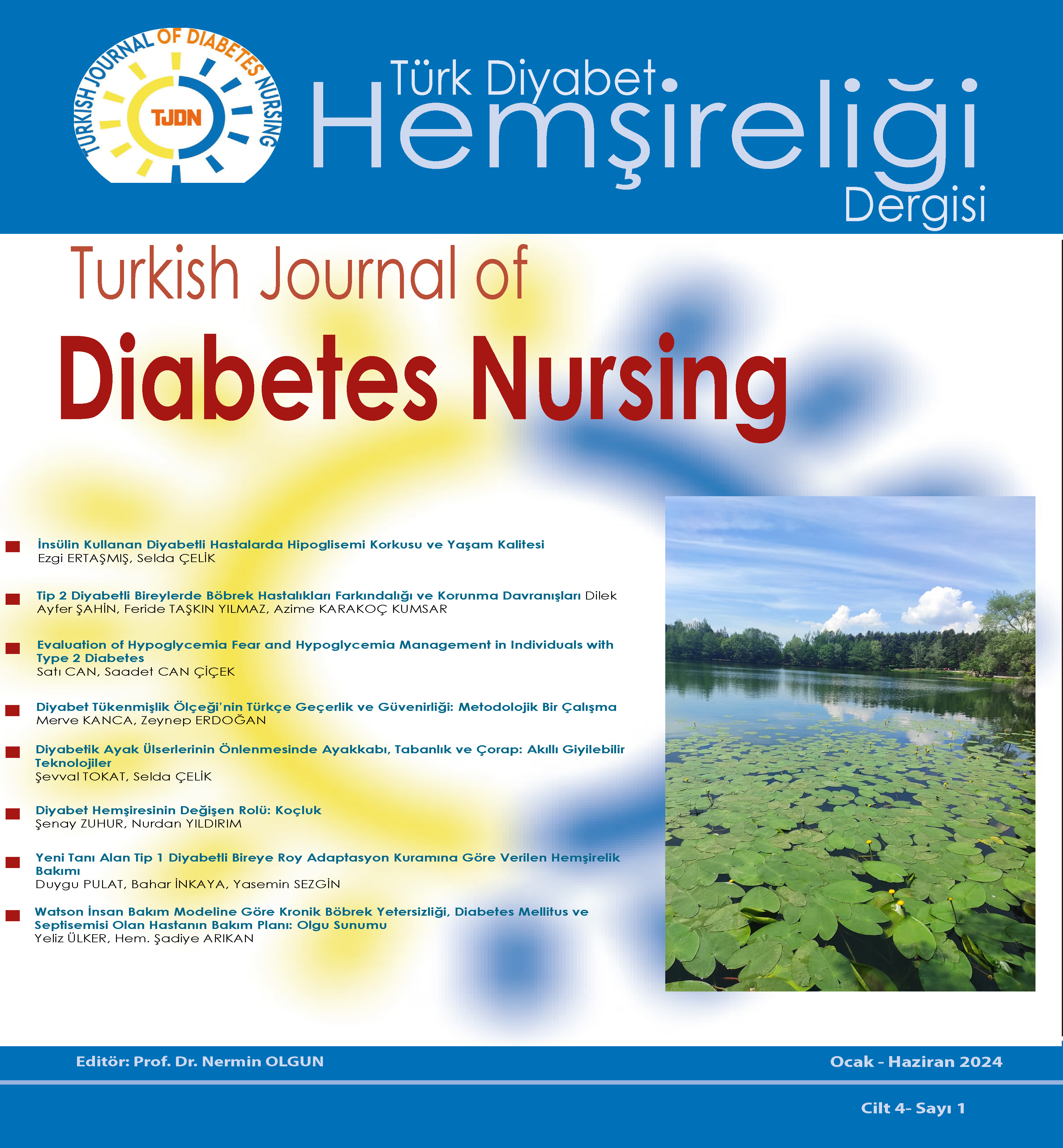Author :
Abstract
Tip 1 diyabet pankreasın insülini çok az salgıladığı ya da hiç salgılamadığı durumlarda görülen kronik bir hastalıktır. Diyabet yönetiminin eğitim, beslenme, egzersiz, medikal süreç gibi bileşenlerle multidisipliner bir ekip tarafından yönetilmesi gerekir. Birçok sistemi etkileyen bu tedavi yönetiminde bireyin ve çevresinin bu sürece uyumu önemlidir. Bu uyumu artırmak amacıyla bu olgu sunumunda Roy Adaptasyon Modeli’ne göre yeni tanı almış olan tip 1 diyabetli bireye verilen hemşirelik bakım süreci anlatılmıştır. Yeni tanı tip 1 diyabet olan 29 yaşındaki hastadan izin alınarak elde edilen veriler doğrultusunda; hiperglisemi, ketoasidoz, bilgi eksikliği, anksiyete, bireysel baş etmede yetersizlik, aile içi süreçlerde güçlenmeye hazır oluş hemşirelik tanıları konulmuş, uygun hemşirelik girişimleri yapılmıştır. Bu doğrultuda, hastaya fizyolojik gereksinimlerinin karşılanması (diyabetin komplikasyonları, insülin uygulama eğitimi, diyet eğitimi, insülin uygulamada bölgeler arası rotasyon) benlik kavramı, rol ve sorumluluklarının düzenlenmesini sağlama, tip 1 diyabet tanısına yönelik bilgi eksikliğinin giderilmesi, tip 1 diyabet tanısına uyumunun sağlanması konularında danışmanlık yapılmıştır.
Keywords
Abstract
Type 1 diabetes is a chronic condition that occurs when the pancreas produces little or no insulin. The management of diabetes should be overseen by a multidisciplinary team, incorporating elements such as education, nutrition, exercise, and medical treatment. Given the impact of this treatment on various systems, both the individual and their environment must adapt to this process. To enhance this adaptation, this case report outlines the nursing care process provided to a newly diagnosed type 1 diabetic according to the Roy Adaptation Model. Drawing from data obtained with consent from a 29-year-old patient newly diagnosed with type 1 diabetes, nursing diagnoses including hyperglycemia, ketoacidosis, lack of knowledge, anxiety, insufficient individual coping, and readiness to strengthen family processes were identified, and appropriate nursing interventions were implemented. These interventions included counseling the patient on fulfilling physiological needs (such as diabetes complications, insulin administration training, dietary education, and rotating insulin injection sites), ensuring the regulation of self-concept, roles, and responsibilities, addressing knowledge gaps regarding type 1 diabetes diagnosis, and fostering adherence to the treatment regimen for type 1 diabetes.





